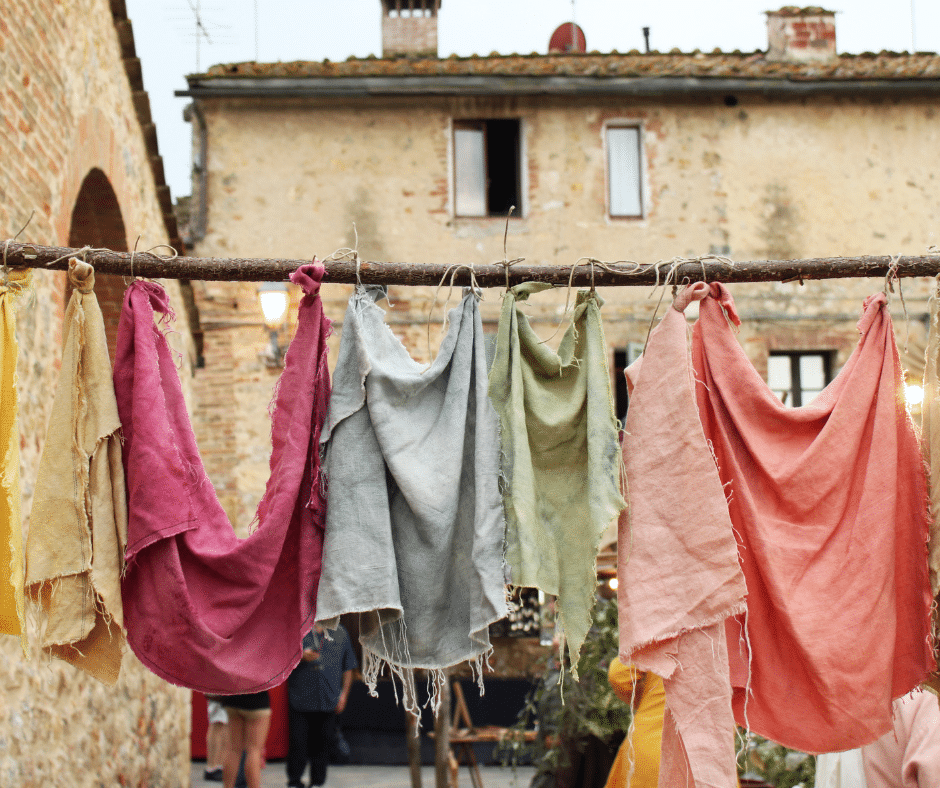It’s no secret that conventional synthetic fibers and fabrics can be made from petroleum products. Plastics derived from fossil fuels are most commonly used in mass-produced clothing, such as fleece jackets, blue jeans, and yoga pants. But every time we wash these items, thousands of microfibers are released into our water systems.

With recent research showing alarming rates of microfiber pollution in the world’s oceans, scientists are searching for sustainable alternatives to petroleum-based fabrics. Even Patagonia, known for its commitment to “the fight against the exploitation of the earth’s resources” is exploring hemp as a possible fiber source.
So what about dyeing on these fabrics? Synthetic fibers like nylon and polyester can’t absorb natural dyes nearly as well as plant-based textiles like cotton and hemp. But the color won’t stick to synthetic fibers unless they first undergo a process called “mordanting.”
Mordanting involves submerging the fabric in an acidic bath, which opens the fiber for chemical bonding. The most common mordanting process involves a synthetic dye called Alizarin Red S derived from petroleum. And because Alizarin Red S is so efficient at absorbing light – it’s often used to stain glass – many assume that this synthetic dye is superior to natural dyes like henna.
Harris Feinsod is a dyed-in-the-wool hippie. His company, A Greener World , specializes in natural dyes and eco-friendly dyeing processes for textiles made from various plant materials. In his 16 years as a textile artisan, Harris has experimented with countless mordant products – from crushed peach pits to crushed sea shells. His favorite, however, is a common food waste product called “black liquor,” which is the dark liquid byproduct of pulp and paper production.

Harris believes that our addiction to disposable products has created an ecological nightmare in the dyeing process. Mordanting textiles with black liquor helps him create deep, lasting colors, especially on synthetic fabrics, without polluting the water supply. By reducing the demand for synthetic dyes derived from petroleum, Harris hopes to “make small changes in people’s lives so that they can have an impact on the world around them.”
The future is bright for this environmental entrepreneur. The popularity of his company has grown steadily since its inception in 2013, and he’s now collaborating with other eco-entrepreneurs to undercut the “profit barriers” that have prevented alternative mordants from being widely adopted.
In conclusion, it’s great that there is an alternative to synthetic dyes, but it’s important for consumers of natural products to make sure they are getting their mordants from sustainable sources.
